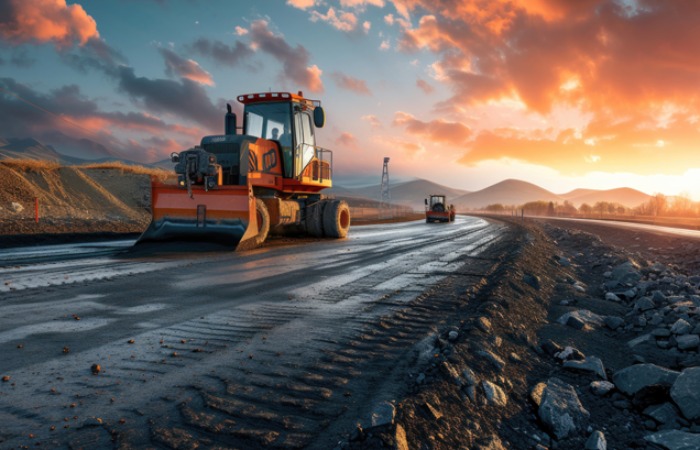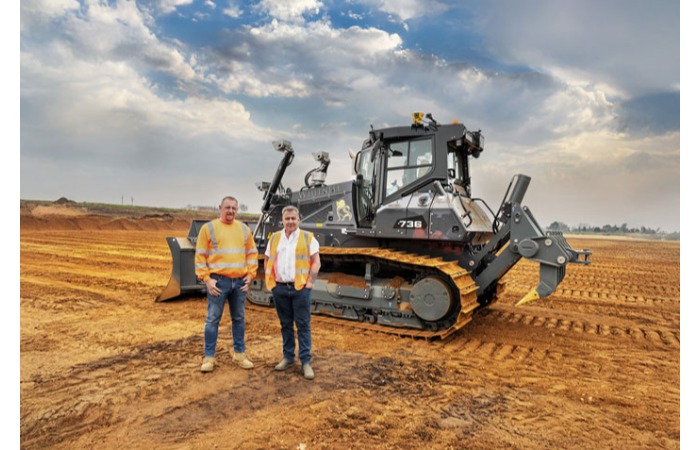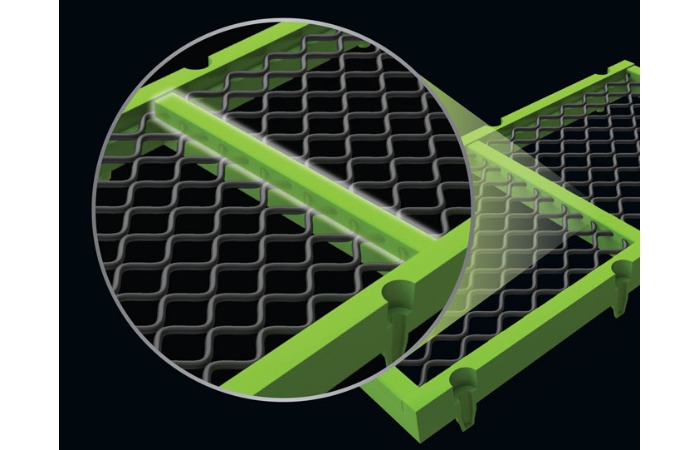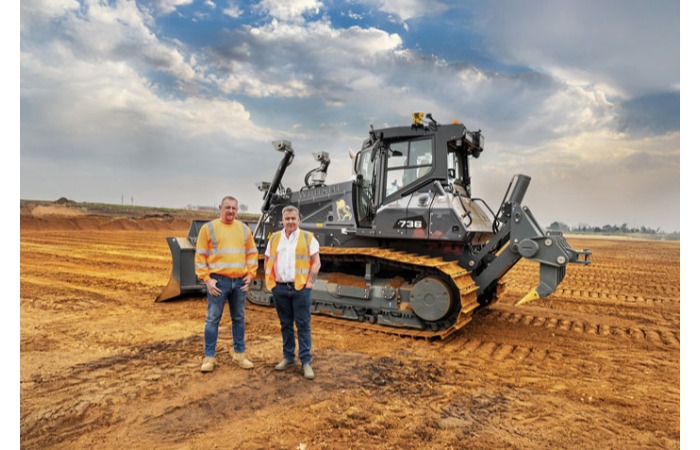10,000 km Push

India’s highways sector has rarely lacked ambition. From the Golden Quadrilateral to Bharatmala and the surge of expressways in recent years, the country has consistently set aggressive road-building targets. The Ministry of Road Transport and Highways (MoRTH) has now set its sights on 10,000 km of highway construction and 10,000 km of awards in FY2026. On paper, the scale is formidable. But on the ground, the outlook for road equipment demand appears less straightforward.
FY2025 closed with 7,002 units of road construction equipment sold, according to industry estimates—a modest number in relation to the scale of construction underway. Contractors, financiers, and OEMs alike are grappling with a mix of optimism and caution. While the project pipeline is healthy, bottlenecks in land acquisition, environmental clearances, and quality control are holding back a smoother demand curve for equipment.
Ashish Kumar Singh, Chief General Manager (Finance), NHAI, noted: “Road construction has a multiplier effect of 2.5 to 3 times on GDP because it engages manpower, machinery, and equipment at scale.” That multiplier will only materialise, however, if the right machines are deployed at the right time and with the right process controls.
From Bharatmala to high-speed corridors
The transition underway is structural. The Bharatmala programme, launched in 2017, was designed as an umbrella initiative to add 34,800 km of highways. But despite billions of dollars of investment, only 24,000–25,000 km could be awarded due to persistent delays. Singh explained: “We cannot afford to issue LoA with 20 to 30 per cent land pending. That would be unfair to contractors, government, and the public.”
With Bharatmala nearing its limits, the government’s next frontier is clear: 14,000–15,000 km of high-speed corridors over the next five years. These are not ordinary roads. They are access-controlled, logistics-driven arteries designed to cut freight travel time and reduce India’s notoriously high logistics costs.
Singh underlined this new philosophy: “For the public, we have created enough. Now we need speed—high-speed corridors for high-speed movement of vehicles.”
This transition has a cascading effect on equipment requirements. Building expressways and high-speed corridors demands higher-precision compaction, more reliable paving, better materials handling, and tighter safety norms.
The compaction conundrum
One of the most pressing issues confronting India’s highways is surface quality. Despite record construction, many stretches face premature distress, rutting, and unevenness.
Dr VK Gahlot, Road Safety Auditor, Centre for Research and Sustainable Development (CfRD), explained: “Road surface roughness causes vehicle vibrations that, in turn, can affect the performance of drivers. Continuous exposure may induce fatigue, a contributory factor to road accidents. Road surface roughness also affects the vehicle operating cost.”
Poorly prepared DPRs and flawed designs contribute to the problem. Atasi Das, Assistant Vice President, GR Infraprojects, pointed out: “Many DPRs are based on limited or poor-quality soil investigations, fail to anticipate escalating traffic load and volume, and overlook critical environmental conditions such as rainfall and temperature extremes.”
The risks are amplified when shortcuts are taken in execution. Pranav Saraswat, Senior Research Fellow, IIT-Jodhpur, warned: “Over-relying on empirical designs (IRC:37) without thorough field investigations leads to under-designed pavements.”
Execution failures—skipped rolling passes, poor temperature control, inadequate curing—are common. Dr. Gahlot stressed: “Improper compaction during construction can lead to uneven surfaces and premature deterioration.”
Intelligent compaction
Technology offers solutions. Arppan B Ghosh, President – Engineering, Cube Highways Technologies, emphasised: “Intelligent compaction helps optimise the use of time and fuel, making the construction process more efficient.”
Yet adoption is slow, mainly because there are no binding specifications mandating its use. Ghosh believes this must change: “The government should mandate the use of this technology in road projects to ensure consistent quality across the board.”
Material Transfer Vehicles (MTVs) also hold promise. By maintaining temperature consistency in asphalt, they reduce weak spots and premature failures. “These vehicles help prevent thermal segregation, which can lead to weak spots and premature pavement failure,” Ghosh explained.
For equipment manufacturers, the current environment demands not just supplying machines but ensuring outcomes. Dimitrov Krishnan, MD, Volvo CE India, explained: “For soil embankment and granular sub-base layers, we have the soil compactors… then for asphalt layer we have double drum compactors, and to finally finish the roads, we have pneumatic tyre rollers, which is our leading product in the market.”
Volvo CE is also innovating with alternative fuels and digital tools. “We’ve recently introduced concepts like battery electric powered mini tandem compactors—designed and manufactured in India. These received great attention in the Excon 2023 and Bharat Mobility show,” Krishnan said.
On localisation, he added: “Our commitment to the ‘Make in India’ initiative is through our localised production and continuous improvement efforts. While we maintain global standards in product design and quality, we’ve adapted our offerings to suit the Indian market’s specific requirements.”
Decarbonising construction
Union Minister Nitin Gadkari has been outspoken about the sector’s overdependence on diesel. He told the industry: “CNG, ethanol, methanol, biodiesel, LNG, electric—these are all part of our roadmap.”
His reasoning is economic as much as environmental: “According to IIT Kanpur and IIT Chennai, our logistics cost is 16 per cent. China’s is 8 per cent. In European countries it is around 12 per cent, and in the US it is just 6 per cent. Our target is to bring logistics cost into single digits—9 per cent.”
On hydrogen, Gadkari is unequivocal: “We are creating hydrogen fuelling stations and corridors. Hydrogen is the fuel of the future, and we are moving towards it.”
On ethanol, he stressed rural benefits: “Ethanol is not just about reducing imports; it means giving our farmers a new market.”
Sustainable materials and methods
Technological innovation in materials is another bright spot. Satyanarayan Purohit, VP, Dilip Buildcon, noted: “Cold-mix technology, which uses emulsions instead of traditional hot asphalt, is now being used in various projects across India.”
Warm-mix asphalt, which requires lower compaction temperatures, is gaining ground for its energy savings. Stone Mastic Asphalt (SMA), reinforced with polymer-modified bitumen, is being adopted on high-traffic corridors like the Delhi–Katra and Delhi–Vadodara expressways. These methods collectively reduce emissions while extending road life.
The accountability shift
Experts argue that the road sector must move from a specification-driven approach to a performance-driven framework. Saraswat suggested: “Performance-based evaluation would include post-construction audits based on the International Roughness Index (IRI), rut depth and deflection… and would penalise contractors under the defect liability period for early deterioration.”
Das reinforced this point: “The need now is not just specification but on-ground accountability and digital tracking of lifecycle performance.”
Such frameworks would incentivise contractors and OEMs to invest in quality-enhancing technologies like intelligent compaction and advanced pavers, rather than taking shortcuts to win bids.
Gadkari’s broader narrative ties all this together: “This is not just about fuel. It is about the future of India’s economy, our villages, and our environment.” His vision is one where reducing oil imports, empowering farmers, and cutting logistics costs converge with climate responsibility.
Road safety, too, is central. “Accidents are my biggest concern,” Gadkari admitted. He has urged the integration of safety into school curricula and insisted: “There can be no compromise—whether it is in machine quality, road quality, or environmental standards.”
Global developments also matter. The acquisition of LeeBoy by Fayat Group signals ongoing consolidation, with OEMs positioning for a market where digital compliance, sustainability, and lifecycle services become non-negotiable.
As Singh said: “Making a road world-class will not last more than four or five years if it is not maintained in a world-class manner.” The same could be said for the equipment business itself: in this new cycle, only those who can deliver quality, efficiency, and sustainability will endure.














